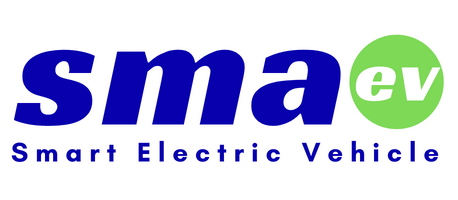There are many materials for batteries, including nickel-metal hydride batteries, nickel-zinc batteries, nickel-cadmium batteries, and lithium-ion batteries. Among them, lithium-ion batteries have the characteristics of high energy density, light weight and long life in addition to being rechargeable and dischargeable. The advantages of low cost and other advantages have gradually become the darling of electric vehicle manufacturers.
The market share of lithium iron phosphate batteries continues to rise
According to the TrendForce survey, from the perspective of China, the world’s largest electric vehicle market, power batteries will reverse in the market in 2021. Lithium iron phosphate batteries officially surpass ternary lithium batteries (NCM, NCA) with 52% of the installed capacity. The proportion of installed capacity in the first quarter of this year continued to rise to 58%; the growth rate also far exceeded that of ternary lithium batteries. However, from the perspective of the global electric vehicle market, thanks to the increase in the penetration rate of new energy vehicles in Europe and the United States, ternary lithium batteries will still have a market share of more than 60% in 2021, far exceeding lithium iron phosphate batteries, which have a market share of about only 32% to 36%.
Industry organization Benchmark Miniral Intelligence (BMI) also estimates that the market share of lithium iron phosphate batteries in the United States and Canada is estimated to be only 3% in 2022, and about 6% in the European Union, and the rest are ternary lithium batteries; although iron phosphate batteries Lithium batteries have a much higher market share in China, estimated to be only 44%, and ternary lithium batteries still account for 56%.
Although there is still a big gap, according to the production capacity planning of global new energy battery cathode material manufacturers in the past two years, the scale and speed of expansion of lithium iron phosphate materials will far exceed that of ternary lithium materials. Judging from the planned expansion projects announced by the global cathode material manufacturers, most of them are concentrated in China and South Korea. There is bound to be a certain gap between them, and it remains to be seen how much the actual effective production capacity can be achieved in the future.
The future is looking good, and major car manufacturers have laid out
It is worth noting that since the second half of 2021, the prices of core battery raw materials including lithium, cobalt, and nickel have continued to rise, leading to the fact that in the first quarter of this year, various automakers and brands had to increase the prices of electric vehicles one after another. In addition, the global power battery supply chain has been affected. Affected by uncertain factors such as the Russian-Ukrainian war and the epidemic, there will be a gap in the growth rate between the supply and demand of the industrial chain in the short term. As the core component with the highest overall cost of electric vehicles, how to reduce the cost of battery materials and ensure the security of the supply chain will be two major issues related to the future competitiveness of enterprises.
Under this trend, TrendForce expects that the cost-effectiveness of lithium iron phosphate batteries will become more prominent. With the continuous advancement of technology, it may become the mainstream of the terminal market in the next 2 to 3 years. The proportion of global installed capacity will also change from 3:7 to 6:4 in 2024.
Tesla began to use lithium iron phosphate batteries in the US-made entry-level Model 3 in 2021, while the Chinese-made Model 3 began to use it as early as 2 years ago, and the supplier is China’s Ningde Times; In October 2019, it was announced that its global electric vehicle models will gradually switch to using lithium iron phosphate batteries.
Not only Tesla is betting on lithium iron phosphate batteries, but Fisker, an electric vehicle startup, also plans to use lithium iron phosphate batteries in lower-priced SUVs, initially using batteries from the Ningde era. Or batteries produced in neighboring countries such as the United States, Canada or Mexico can be obtained from 2025.
According to Reuters statistics, more than 10 companies will prepare to set up factories in Europe or the United States to produce lithium iron phosphate batteries in the next three years. Luxury car dealers are also interested in following up. Volkswagen’s Audi models have never used lithium iron phosphate batteries, but they have changed course after the outbreak of the Russian-Ukrainian war. Coincidentally, BMW’s purchasing chief recently revealed that he is reviewing the use of lithium iron phosphate batteries. benefit.
There are still worries in the prosperity
Although lithium iron phosphate batteries have many benefits and are becoming more and more popular in the market, in order to make this kind of battery more widely used, several problems must be solved first: first, the problem of concentrated energy consumption affecting the endurance; second, iron lithium oxide The lithium content of lithium batteries is higher than that of ternary lithium batteries, so whether the price of lithium will continue to rise is also an issue to be considered.
In addition, nearly 90% of the global lithium iron phosphate batteries are produced by Chinese manufacturers, and its key raw materials can be said to be in the hands of China. Will it also monopolize the global power battery market in the future? The United States has also foreseen this concern and will spend $17 billion to build a local lithium iron phosphate battery supply chain.





